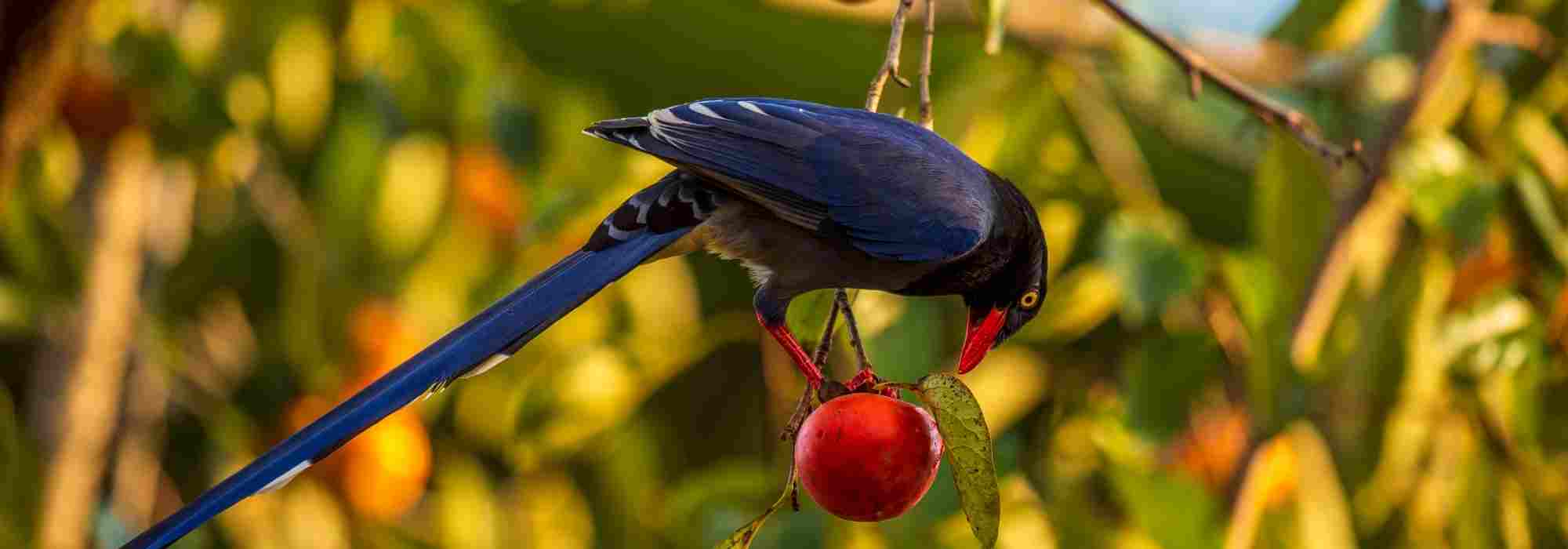
Bird netting for cherry trees: when and how to install it?
To protect your cherries from birds
Contents
Every year, as soon as the cherries begin to blush on the tree, the same scenario unfolds! While blackbirds, magpies, and starlings prove the most voracious, descending in droves upon the barely red cherries, sparrows and pigeons don’t hesitate to take a few pecks with their beaks. Suffice to say, the harvest is often meagre, leaving you with only the cherries the birds have graciously spared. A true heartbreak for the gardener who has lovingly pruned and nourished their cherry tree.
Among the many protective or deterrent solutions, the bird net for cherry trees may seem fiddly to install, but it is undoubtedly the most effective way to secure a decent cherry harvest. Should you use one every time? When is the best time to act to avoid harming the flowering or the pollination? And most importantly, how can you secure it effectively without harming wildlife?
Discover how to install a net on a cherry tree, from practical advice to tried-and-tested tips.
Why protect your cherry tree from birds?
At first glance, the question might seem a tad ridiculous! And the answer obvious… Cherries, even while ripening, are a delicacy for many birds, particularly blackbirds, magpies and starlings, but also sparrows, thrushes and wood pigeons… Suffice to say that, from early May in some regions, your cherry tree is likely to be very popular. These feathered visitors, drawn to the blushing cherries, can cause absolute carnage in record time. Sometimes just a day or two is enough to see all your fruit disappear into the beaks of these intruders. And these winged invaders often prove remarkably persistent, to the point of growing accustomed within days to traditional scare tactics. We’re talking CDs, plastic bottles or aluminium foil strips hung from branches, scarecrows and reflective silhouettes, even sonic deterrents and ultrasonic repellents.
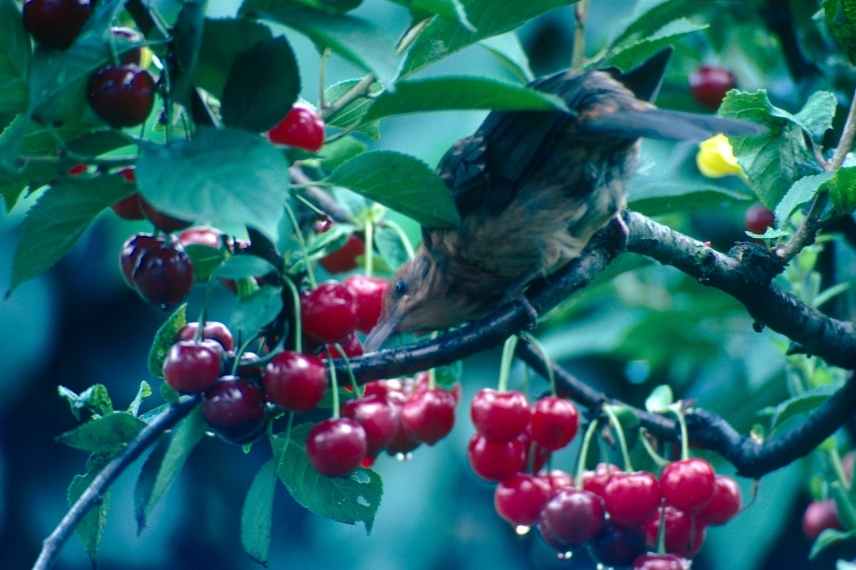
Blackbirds, magpies and starlings are particularly fond of cherries
Beyond the significant harvest loss, birds tend to peck at some cherries that remain on the tree. Not only do they become unfit for consumption, but this opens the door to rot, fungal diseases and aphid infestations. Not to mention the droppings these birds leave around the trees during their feasts.
This is why installing bird netting to provide physical protection for the cherries may be worth considering.
Read also
How to protect fruit trees from birds?The bird net: a reliable solution to protect a cherry tree?
The bird net is a physical barrier that prevents birds from accessing the fruit. There are different types of nets, usually made of extruded polyethylene or nylon, featuring mesh sizes varying between 15 and 25 mm. The small-mesh nets, under 20 mm, are sufficient for small birds like sparrows, but if your cherry tree is mainly visited by blackbirds or starlings, opt for nets with 25 to 50 mm mesh. Some nets are made of knitted polyethylene for reinforced protection. As for fixed-mesh nets, they are easier to install. These nets are UV-treated. Typically green in colour, they blend into the vegetation. It’s essential to accurately estimate the span and height of your tree before choosing the most suitable net.
This bird net offers undeniable advantages:
- Its effectiveness: once properly installed, this net provides a reliable solution for almost total cherry protection
- Its durability: good quality nets are a long-term investment as they can be reused year after year
- Its environmental neutrality: the bird net is a non-invasive, non-polluting protection method for the environment and wildlife. Unlike chemical products, it has no negative impact on the ecosystem and respects biodiversity
- Its cost-effectiveness: while the initial purchase represents a significant cost, it proves economical over time.
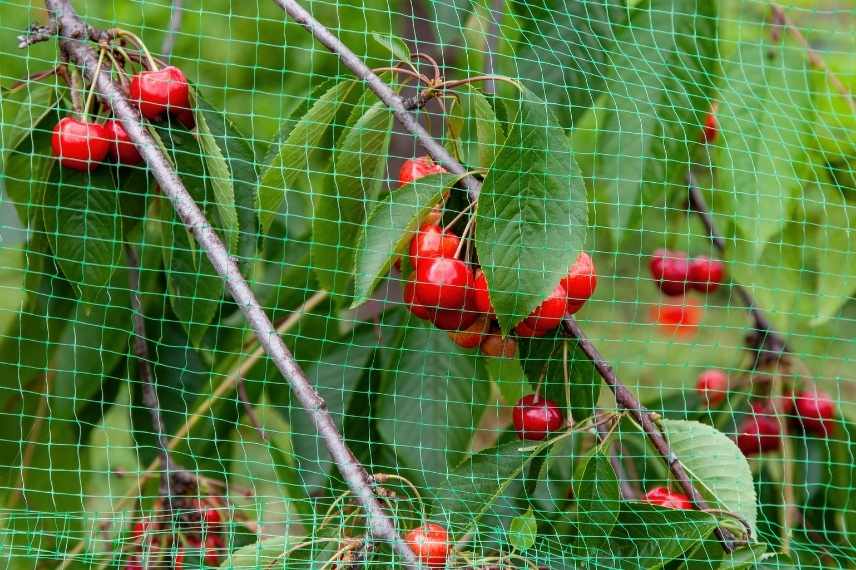
The bird net is a highly effective physical barrier for protecting cherries
However, this bird net isn’t without its drawbacks, though relatively minor compared to its advantages:
- Its installation: fitting a bird net can be tricky, especially on large cherry trees. It often requires a ladder or stepladder and at least two people
- Its aesthetics: some gardeners consider these nets unsightly as they alter a tree’s natural appearance by weighing down the branches
- Its potential risk to wildlife: if poorly installed, the net can become a deadly trap for bolder birds. But regular monitoring can prevent this issue.
When to install a bird netting on your cherry tree?
The timing for installing a bird net is crucial. Indeed, a net installed too early, for example during flowering, can hinder pollinating insects or damage the flowers. Whereas installing it too late may give birds enough time to attack the fruits.
Ideally, a net should be installed when the cherries start changing colour, turning from green to yellow or pale pink. This is usually the stage when birds begin to take interest.
It is therefore essential to monitor the development of the fruits and observe increased bird activity around the tree to determine the optimal time to install the net. A simple absence over a weekend may be enough for birds to feast on cherries and cause significant losses.
How to put a filament on a cherry tree?
At first glance, installing a cherry tree net to protect against birds may seem complex and tricky. However, with experience, the operation will become easier year after year. For dwarf or espalier-trained cherry trees, installing the net poses little difficulty. On the other hand, for large trees, it’s certainly less straightforward. Discover our tips and tricks to make installing a net easier.
To begin, you’ll need to gather some equipment, particularly poles or stakes such as large bamboo canes, along with ropes, strings, or ties to secure the net. A stepladder or ladder may also be necessary.
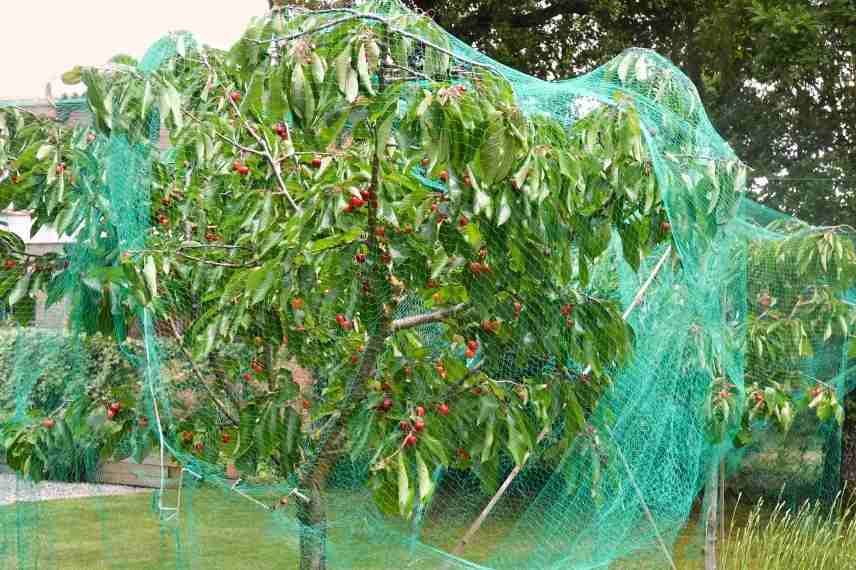
The bird net must cover the entire tree to prevent birds from getting underneath
Installation steps:
- Unfold the net on the soil and identify its corners to facilitate installation. If your net isn’t large enough, you can use two or three, securely attached together, to increase the protected area
- With the help of one or more people, lift the net above the tree using poles or stakes and let it fall gently to cover the entire canopy
- Secure the net to the trunk or lower branches using ropes or ties, ensuring it’s tight to avoid creating pockets where birds could slip in
- Ensure the net is securely fastened to the soil or lower branches to prevent birds from getting underneath.
In practice, the net will slightly bend or flatten the tips of the cherry tree’s branches, but it won’t break or damage them. These extremely lightweight nets are specially designed for this purpose. Moreover, these nets don’t harm the fruits, which can fully benefit from the sunlight.
To harvest your cherries, simply untie the net’s fastenings and go underneath it. This allows you to stagger the picking as the fruits ripen progressively.
Here are a few extra tips...
To extend the lifespan of your filament, a few good practices are essential:
- Check regularly the condition of the cherry tree filament to detect any tears, especially when removing it. The mesh can be repaired quite easily
- Remove the filament after the last harvest to avoid damaging young shoots or branches during their spring and summer growth. Leaving a filament on a cherry tree also poses a risk to birds or animals
- Clean the filament thoroughly before storage of leaves, twigs, and any debris. If necessary, it can be washed with clear water and left to air dry
- Fold it carefully to avoid nodes (and the frustration during reinstallation!)
- Store the filament in a dry place and sheltered from light, in a sealed bag or box to prolong its lifespan. Also, protect it from rodents!
These simple practices are key to maximising the lifespan of your filament.
- Subscribe!
- Contents
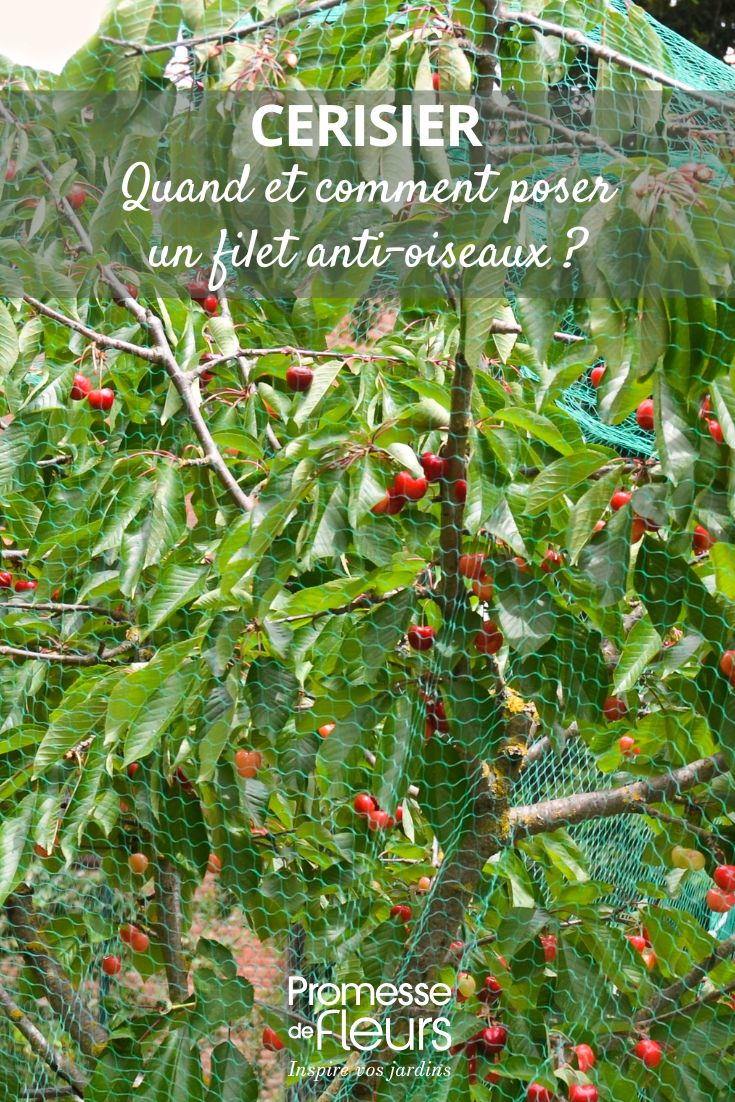































Comments